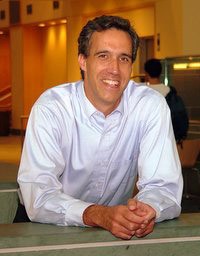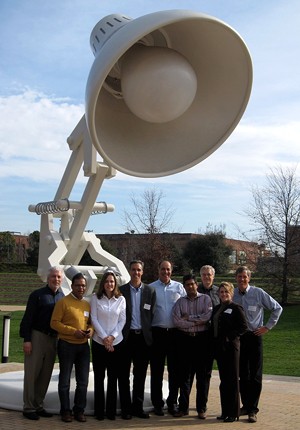From the new dean: CIS has more legs to stand on
By Bill Steele
Daniel P. Huttenlocher, the John P. and Rilla Neafsey Professor of Computing, Information Science and Business, became dean of the Faculty of Computing and Information Science (CIS) in July, succeeding founding dean Robert L. Constable, professor of computer science. We asked Huttenlocher about the future of CIS.
Q: What have you inherited from Bob Constable's 10 years as dean?
A: Cornell's Computing and Information Science programs are very visible nationwide. While a number of other universities have created colleges of computing, no other institutions have this cross-cutting structure. Moreover, several of our peers are following our lead in tying information science (or informatics) more closely to computer science and other technical fields.
Q: What will be different in the next 10 years?
A: CIS was started because computing was so broadly applicable in life, and I think the applicability has only increased in the past decade. Ten years ago you didn't expect your car to be telling you where you're going. I think that computing in everyday life is an important part of the education mission of CIS. We're trying to reach the broad base of students who should know more about the computing world and the algorithmic thinking under everyday life. They come to college and take these courses, and there's an "Aha!" because they're getting some scientific grounding for things they've experienced.
Q: And on the academic and research side?
A: Our renewed focus is to look at CIS as three programs: Computer science (CS), information science (IS) and statistics. The original idea was to connect CS with other departments. Now it will bridge from statistics to something or IS to something or CS to something. We have three legs to stand on instead of just one. In the future there may be more but right now we want to reinforce those three.
Q: So what's happening in information science?
A: Much of what IS looks at is usage of technology, not just the technology itself. That includes almost every aspect of our daily lives, from music and electronic books to movies and the news media to education and health care. We're leaders in the area of social media, particularly developing scientific models of social behavior. We have a very active and internationally visible human-computer interaction group in collaboration with the Department of Communication. Policy and law issues are another area that's very important these days. We are just beginning work with the College of Architecture, Art and Planning on digital media, which I am very excited about.
Q: And statistics? Why statistics?
A: Because everyone has these huge sets of data from which they want to draw inferences, make predictions. As soon as you start to infer anything from data, you're in the realm of statistics.
One fundamental difference these days is that much of the data people want to deal with is unstructured [not organized into labeled fields -- mostly plain text]. We're doing data mining where you don't know a priori what the organization of the data are or what kind of information it contains.
Q: What happened in your meetings with the CIS advisory board (a group of industry leaders who are Cornell alums)?
A: Those guys are living this stuff in ways that none of us are, in the leading edge firms, Google, Cisco, Intel, Autodesk, Pixar. They are extremely excited about what we're doing in CIS, they see it as an incredibly important growth area for much of what's happening in the business world.
They had a lot of advice about how to get more students interested in these areas of study, [such as] going into middle school and high school technology fairs. They volunteered their time. If their companies are already hosting events, we might bring in Cornell faculty. We are working on a plan to do better at getting the Cornell name out there. There are certain institutions that come to mind when you talk about technology, and Cornell should always be among them.
Q: Is there a way to sum this up?
A: Think back 100 years ago or more to when engineering colleges were starting with names like "mechanical arts," split off from physics and chemistry. The real world got ahead of science, and we really needed to understand the stuff that was happening. I think that's where we are with the information age. We're trying to build the intellectual foundations of this new information age.
Get Cornell news delivered right to your inbox.
Subscribe
